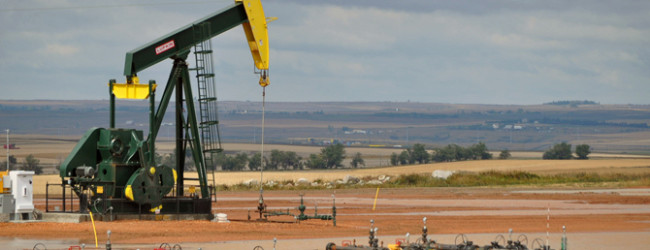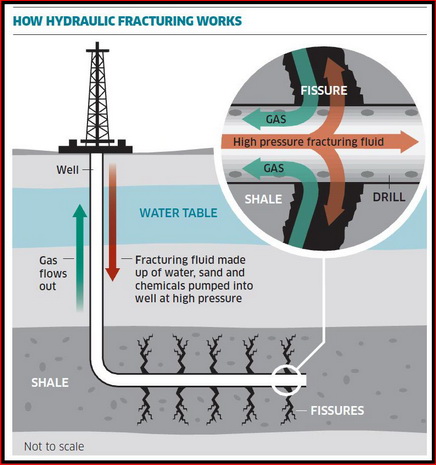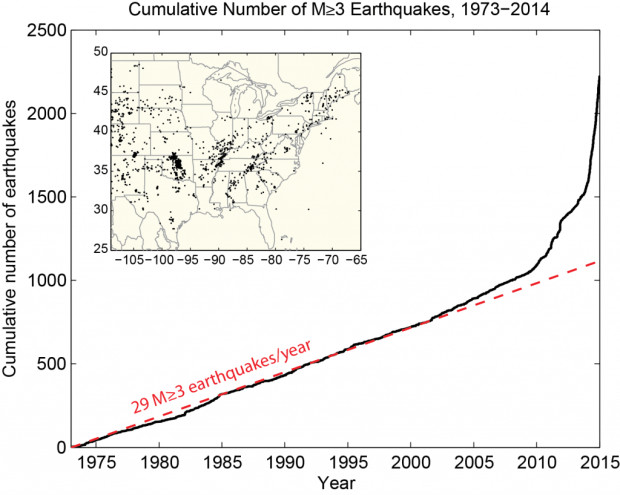The U.S. Geological Survey (USGS) has recently released a study that confirms there has been a drastic increase in earthquakes coinciding with the injection of wastewater into disposal wells, which is part of the ‘fracking’ process.
What is Fracking?
Hydraulic fracturing (or ‘fracking’) is the process of drilling into the Earth before directing a high pressure mixture of water, sand, and unknown chemicals into the rock below to release the gasses inside. As the mixture is injected into the rock, it forces the gas out to the head of the well.
While the study has found that an increase in seismic activity coincides with the injection of wastewater into the earth, it claims that fracking itself does not appear to be linked to the increased rate of earthquakes with a magnitude of 3.0 and larger. However, it continues:
“Although wastewater injection has not yet been linked to large earthquakes (M6+), scientists cannot eliminate the possibility. It does appear that wastewater disposal induced the M5.3 Raton Basin, Colorado earthquake in 2011 as well as the M5.6 quake that struck Prague, Oklahoma in 2011, leading to a few injuries and damage to more than a dozen homes.”
The injection of wastewater into wells in Alabama, Arkansas, Colorado, Kansas, New Mexico, Ohio, Oklahoma, and Texas are all causing earthquakes with a magnitude of 3.0 (M3) and above. From the beginning of the 1970’s until 2008, the states mentioned above experienced an average of about 21 M3 (or greater) earthquakes a year. This rate shot up dramatically between 2008 and 2013, to 99. In 2014, there was a staggering 659 quakes that were M3 or higher.
While reports of the USGS’s findings are only now surfacing in the media, the fact is the government has known of the hazards of injecting wastewater into the ground for quite some time. In a 2012 report by AllGov, the Ohio Department of Natural Resources (ODNR) concluded that a series of 12 quakes in the Youngstown, Ohio area between March and December of 2011, was likely due to nearby fracking operations.
In a 2011 report by OilPrice.com:
“According to the U.S. Army’s Rocky Mountain Arsenal website, the RMA drilled a deep well for disposing of the site’s liquid waste after the U.S. Environmental Protection Agency, “concluded that this procedure is effective and protective of the environment.” According to the RMA, ‘The Rocky Mountain Arsenal deep injection well was constructed in 1961, and was drilled to a depth of 12,045 feet’ and 165 million gallons of Basin F liquid waste, consisting of ‘very salty water that includes some metals, chlorides, wastewater and toxic organics’ was injected into the well during 1962-1966.”
“Why was the process halted? The Army discontinued use of the well in February 1966 because of the possibility that the fluid injection was ‘triggering earthquakes in the area,’ according to the RMA. In 1990, the ‘Earthquake Hazard Associated with Deep Well Injection–A Report to the U.S. Environmental Protection Agency’ study of RMA events by Craig Nicholson, and R.I. Wesson stated simply, ‘Injection had been discontinued at the site in the previous year once the link between the fluid injection and the earlier series of earthquakes was established.’”
Quite a few lawsuits placing blame on the fracking industry have been filed around the country. This includes a lawsuit filed by a Prague resident who was injured when bricks from her fireplace were knocked loose in an earthquake, landing directly on her.
Much of the controversy surrounding the fracking industry has to do with the chemicals used. While we know water and sand are in the mixture, the chemicals used have not been disclosed as they are seen by the industry as a ‘trade secret.’ It isn’t exactly like they’re protecting grandma’s apple pie recipe, these chemicals are producing tens of millions of gallons of toxic wastewater byproduct per day. What doesn’t end up in wells, leaks into pits and both present risk of contamination to fresh water supplies.
Credits: Anonymous.











